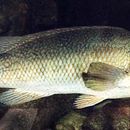Diagnostic Description
provided by Fishbase
Body rather massive. Mouth small with thick lips and large conical teeth. Coloration very variable, brownish and greenish predominating (Ref. 35388).
- Recorder
- Arlene G. Sampang-Reyes
Life Cycle
provided by Fishbase
Eggs are laid in nest built from algae; male guards nest 1-2 weeks until larvae hatch (Ref. 35388); larvae are pelagic.
Trophic Strategy
provided by Fishbase
Littoral (10 - 20 m) around rocks, offshore reefs, and seaweed. Young often in intertidal areas. One (or more) female spawns in nest of algae, built by male in a crevice. Feed on crustaceans, molluscs (Ref. 4742) and sea urchins (Ref. 55064). Important predators of sea urchins in Azorean coastal habitats (Ref. 55064).
- Recorder
- Drina Sta. Iglesia
Biology
provided by Fishbase
Adults are found in littoral (10-20 m) zone around rocks, offshore reefs, and seaweed. Young often in intertidal areas. All are born females and change sex when they are 4-14 years old (Ref. 35388). One (or more) female spawns in nest of algae, built by male in a crevice. Feed on crustaceans and mollusks (Ref. 4742). Oviparous (Ref. 205).
Importance
provided by Fishbase
fisheries: subsistence fisheries; gamefish: yes; aquarium: commercial

